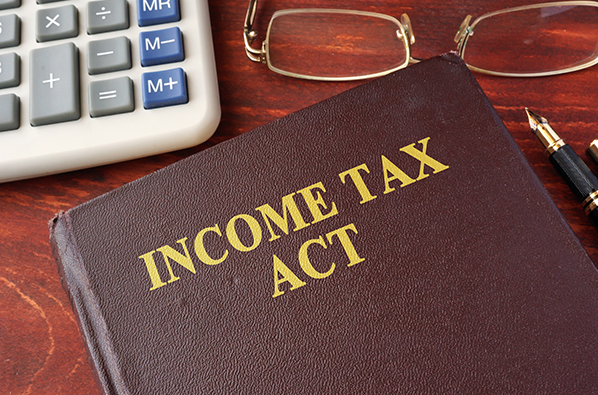Introduction to Income Tax Act
Income tax as a concept has been present in India for many years, but James Wilson who became India’s first finance (British) member introduced the first modern Income Tax Act in 1860. “It was only for the good of his subjects that he collected taxes from them, just as the Sun draws moisture from the Earth to give it back a thousand fold,” wrote Kalidas in his epic poem Raghuvansh.
What is Income Tax?
Income tax in India is a tax you pay to the government based on your income (and profit, in the case of companies). The government uses this tax money for various purposes including public services, infrastructure development, defence spending and subsidies among other options. If you earn income beyond a certain limit, it is mandatory to pay income tax every year.
Income Tax Act 1961
The Income Tax Act is a comprehensive statute that focuses on the different rules and regulations that govern taxation in the country. It provides for levying, administering, collecting and recovering income tax for the Indian government. It was enacted in 1961.
The Income Tax Act contains a total of 23 chapters and 298 sections according to the official website of the Income Tax Department of India. These different sections deal with various aspects of taxation in India. The various heads for which you have to pay income tax include:
- Salary
- Income from house property
- Capital gains
- Profit and gains from business or profession
- Income from other sources
Every year, the Indian government presents a finance budget during the month of February. The budget brings in various amendments to the Income Tax Act. This includes changes in tax slabs wherever applicable. For example, the Finance Minister announced that the tax rate for individuals in the lowest tax bracket of Rs. 2.5 lakh to 5 lakh would be cut from 10% to 5% in FY2017. Similarly, tax on Long Term Capital Gains (LTCG) was re-introduced during the FY2018 budget. As a result, all gains greater than Rs. 1 lakh from shares and equity mutual funds held longer than one year is now eligible for LTCG tax at 10%.
The most recent budget presented by the current Finance Minister Nirmala Sitharaman included the introduction of a new optional system of taxation that comes with reduced income tax rates. These new rates shall be available as an option from the financial year 2020-21.
Such amendments become a part of the Income Tax Act from the following financial year (beginning from 1st April) following the approval from the President of India.
Who are income taxpayers in India?
Every Indian citizen has to pay income tax if their annual income is above Rs. 2.5 lakh (Rs. 3 lakh for senior citizens). In addition to individuals, entities such as Hindu Undivided Family (HUF), Body of Individuals (BOI), corporate firms, companies, Artificial Juridical Persons, local authorities and Association of Persons (AOP) also pay income tax.
6.84 crore people filed Income Tax Returns (ITRs) during FY2017-18. This resulted in net direct tax collections of Rs. 9.95 lakh crore for the year. This was 17.1% higher than the collections for the previous year according to the Central Board of Direct Taxes (CBDT).
Income tax slab rates
The income tax you pay depends on your annual income. Budget 2020 introduced new reduced tax rates that shall come into effect from the year 2020-21. The tax slab rates according to the new system are categorized in the following way:
| Income tax slabs | Income tax rates |
| Less than Rs. 5 lakhs | Exempt |
| Between Rs. 5 lakhs and 7.5 lakhs | 10% |
| Between Rs. 7.5 lakhs and 10 lakhs | 15% |
| Between Rs. 10 lakhs and 12.5 lakhs | 20% |
| Between Rs. 12.5 lakhs and 15 lakhs | 25% |
| Above Rs. 15 lakhs | 30% |
From FY 2020-21, taxpayers shall have the option to choose between the existing taxation system and the new regime. The new system has revised the income slabs and reduced the rates thereon. Another major change in the new scheme is that many of the deductions and exemptions generally applicable in the old tax regime are no longer valid. Nearly 70 of the 100 or so existing deductions and exemptions are to be scrapped in the new regime. Taxpayers can compare their tax liabilities under the two systems and opt for the one that’s most beneficial to them.
For the financial year 2019-20, taxpayers shall continue to be governed by the old tax system, under which all existing deductions can be claimed.
Existing Deductions under Income Tax Act 1961
According to the Income Tax Act 1961, you can claim deductions under the following sections:
- Section 80C to 80: Under Section 80C, 80CCC & 80CCD of the Income Tax Act 1961, you can reduce your taxable income by 1,50,000
- Section 80CCD: Section 80CCD of the Income Tax Act, 1961 focuses on income tax deductions that individual income tax assesses are eligible to avail on contributions made towards the New Pension Scheme (NPS) and Atal Pension Yojana (APY)
- Section 80D: Under section 80D, you can claim income tax deduction for medical expenses and health insurance premiums
- Section 80DD: Tax deduction under Section 80DD of the Income Tax Act can be claimed by individuals who are residents of India and HUFs for the medical treatment of a dependant with disability(ies) or differently abled
- Section 80DDB: Tax deductions under section 80DDB of Income Tax Act 1961 can be claimed for medical expenses incurred for medical treatment of specific illnesses
- Section 80TTA: Section 80TTA provides a deduction of Rs 10,000 on interest income. This deduction is available to an Individual and HUF.
- Section 80U: Under Section 80U, physically disabled persons can claim deductions up to Rs.1,00,000.
